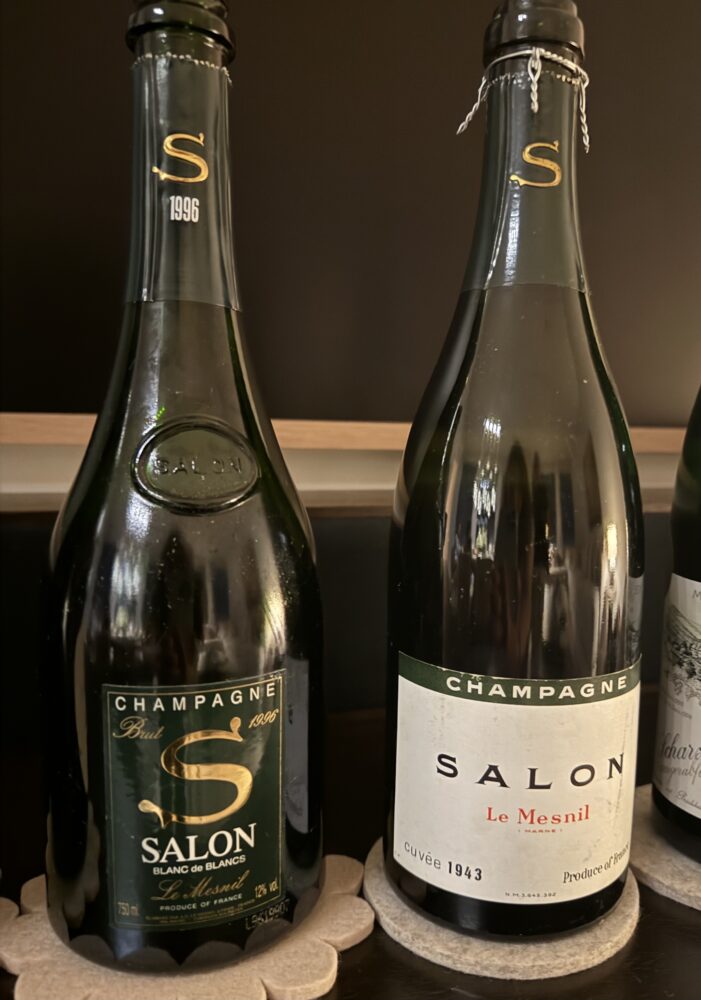
Over the course of my time as a wine reviewer, I’ve enjoyed countless wines and meals that I chose not to document, whether because I felt too shy to suggest it, anxious not to look like a braggart, or just too plain lazy to put it to paper. But a few weeks ago, at a dinner with friends, I decided the time had come and asked the dinner’s host as well as my companions if they would mind if I wrote about the evening’s meal and wines.
If nothing else, I selfishly wanted to be able to recall that night years from now, for the wines as well as the people who brought it together. The private menu for the evening was organized and prepared by Samuel Clonts, Michelin-starred chef and partner of 63 Clinton, located on the Lower East Side of Manhattan. Having enjoyed numerous meals there, I can tell you that if you ever find yourself looking for a high-caliber tasting menu without pretension, this is an absolute must-visit. While I’ve long been a huge fan of Sam’s refined yet down-to-earth cooking style, the wine list has steadily and quietly been ratcheting up its Champagne focus and is working its way toward becoming one of the most impressive medium-sized lists in New York City.
Without mentioning names, I can also say that the two wines for this evening were privately sourced from two female collectors I am lucky to call friends, and we were joined by quite a few others who are all notable in their own right. Though I was not working, I jumped to volunteer my rusty sommelier services to open and check the wines and jot down a few private notes to share with readers.
The menu for the evening included:
Cold miso soup with lemongrass and tomato water
Chawanmushi with summer corn and uni
Caviar handrolls
Handrolls with tuna and salsa verde
Seafood donabe with langoustine, corn, and roasted red peppers
The two Salon wines, vintages 1996 and 1943, were served with the final savory course with the seafood donabe, or Japanese clay hot pot. This summer preparation of donabe was light on its feet yet deeply satisfying, with clean, layered flavors and aromatics that allowed the wines to steal the spotlight at the right moment. The two vintages of Salon were served just before this course was presented and opened immediately before serving. The 1943 cork was removed without issue. However, the cage had to be cut, as the coiled tab broke off immediately. The wines were dramatically different though equally compelling. The 1996 was far and away the star of the night and shimmered with a dazzling chiseled edge until the wine was gone. The 1943 was fully mature and deep with umami and savory layers yet retained the faintest lift of effervescence, almost hinting that it was still sparkling. The 1996 was the better pairing for its freshness and clarity, though there was something haunting and compelling about the juxtaposition with the 1943’s depth and power.
Salon 1996 Champagne Salon Champagne $NA White Sparkling 100
A stunning wine through and through, the 1996 Champagne Salon is one for the ages. Tasted at 28 years old in August 2024, it felt youthful and pristine. The house’s stylistic focus is fully resonant yet has so much life yet to give, retaining a calling card of compact tension and nerve. On opening, it poured a medium straw hue, hardly suggesting its age, and revealed aromatics of crushed seashells, lemon confit, crystalline salted caramel, and poached apples. The palate sets this wine apart, its mousse highly refined yet lively, with buoyant acidity and chalky richness expanding through the extraordinarily long finish. A profound bottle and a profound wine. If you happen to own or come across a bottle stored well, I would venture to guess it has another 10-15 more prime years ahead of it.
Salon 1943 Champagne Salon Champagne $NA White Sparkling 95
The 1943 Champagne Salon was tasted alongside the 1996 in 2024. On opening, the cork was removed cleanly and poured a deep golden/light amber color. The nose was clean, though fully mature, with umami-rich notes of porcini, salty broth, praline, apricot, and marmalade. The palate was surprising in that, while it had almost entirely lost its sparkling quality, there was a lift of effervescence that carried the wine in a way that no still wine could have. While it’s unquestionably past its peak, the experience of having a wine from this wartime era that also was not dead may well be one of the single greatest tasting moments of my life to date.


